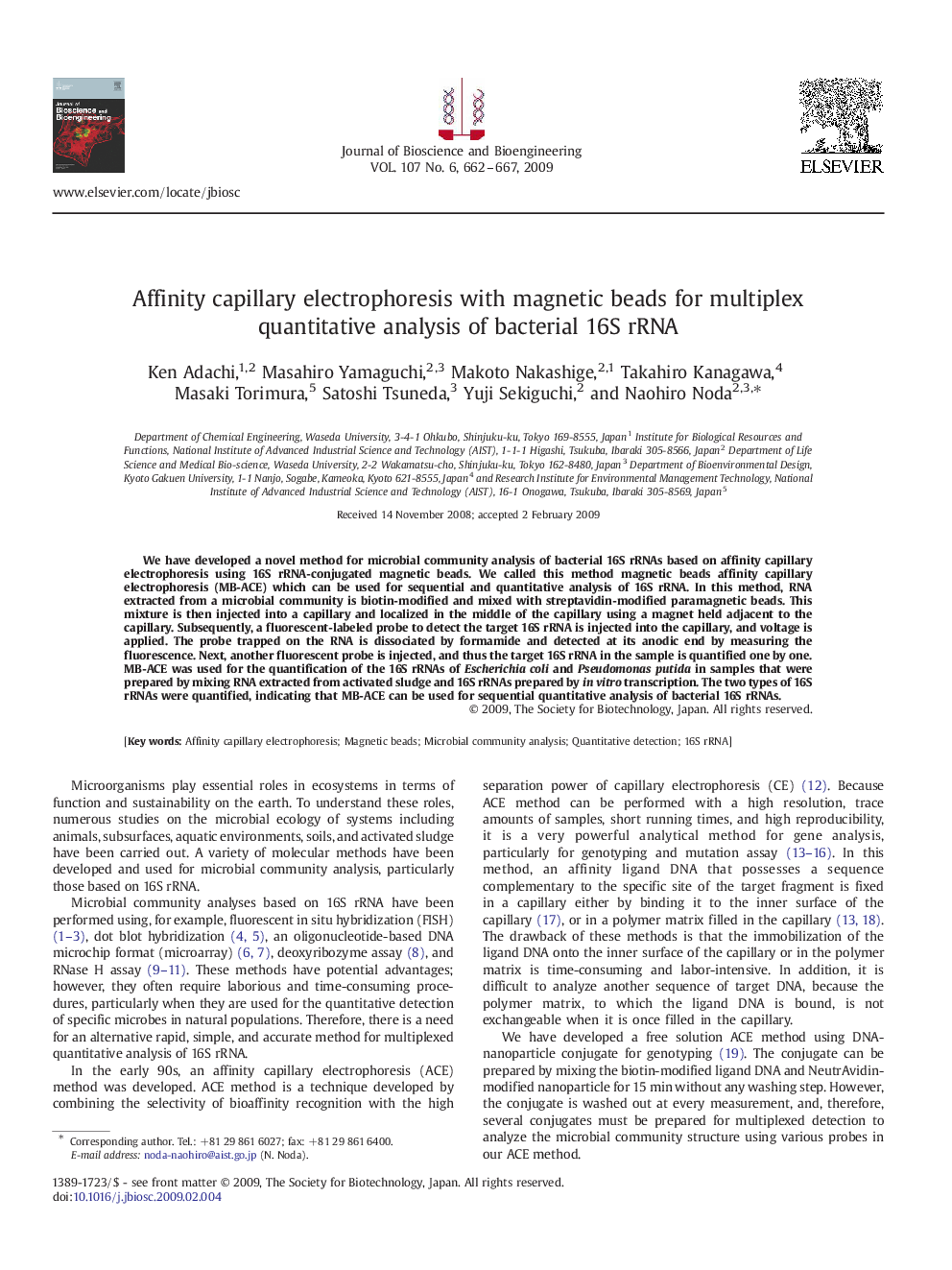| Article ID | Journal | Published Year | Pages | File Type |
|---|---|---|---|---|
| 21872 | Journal of Bioscience and Bioengineering | 2009 | 6 Pages |
We have developed a novel method for microbial community analysis of bacterial 16S rRNAs based on affinity capillary electrophoresis using 16S rRNA-conjugated magnetic beads. We called this method magnetic beads affinity capillary electrophoresis (MB-ACE) which can be used for sequential and quantitative analysis of 16S rRNA. In this method, RNA extracted from a microbial community is biotin-modified and mixed with streptavidin-modified paramagnetic beads. This mixture is then injected into a capillary and localized in the middle of the capillary using a magnet held adjacent to the capillary. Subsequently, a fluorescent-labeled probe to detect the target 16S rRNA is injected into the capillary, and voltage is applied. The probe trapped on the RNA is dissociated by formamide and detected at its anodic end by measuring the fluorescence. Next, another fluorescent probe is injected, and thus the target 16S rRNA in the sample is quantified one by one. MB-ACE was used for the quantification of the 16S rRNAs of Escherichia coli and Pseudomonas putida in samples that were prepared by mixing RNA extracted from activated sludge and 16S rRNAs prepared by in vitro transcription. The two types of 16S rRNAs were quantified, indicating that MB-ACE can be used for sequential quantitative analysis of bacterial 16S rRNAs.
